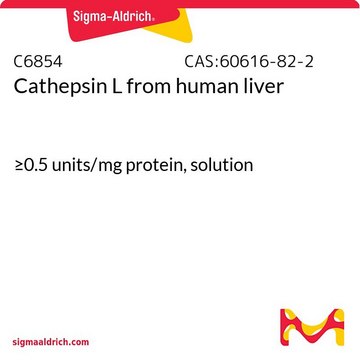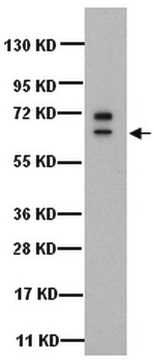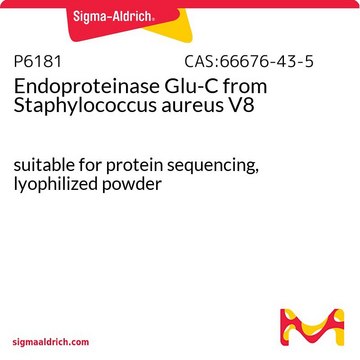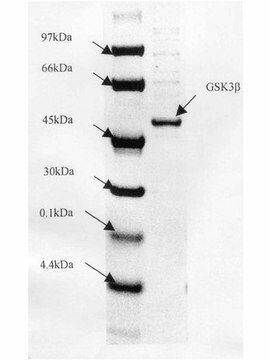219402
Cathepsin L, Human Liver
Cathepsin L, Human Liver, CAS 60616-82-2, is a native, the most potent of all the lysosomal proteinases. Plays a major role in the proteolysis of both cellular and endocytosed macromolecules.
同義詞:
CTSL, CTSL1, Human Cathepsin L, Major excreted protein (MEP)
登入查看組織和合約定價
全部照片(1)
About This Item
推薦產品
生物源
human liver
品質等級
形狀
liquid
製造商/商標名
Calbiochem®
儲存條件
OK to freeze
avoid repeated freeze/thaw cycles
技術
activity assay: suitable
適合性
suitable for molecular biology
應用
life science and biopharma
運輸包裝
wet ice
儲存溫度
−70°C
基因資訊
human ... CTSL(1514)
一般說明
Research area: Cell Signaling
Cathepsin L, Human Liver, native, is the most potent of all the lysosomal proteinases. Cathepsin L (CTSL) belongs to the papain subfamily of cysteine proteases and is mainly located in endolysosomal vesicles.
Cathepsin L, Human Liver, native, is the most potent of all the lysosomal proteinases. Cathepsin L (CTSL) belongs to the papain subfamily of cysteine proteases and is mainly located in endolysosomal vesicles.
生化/生理作用
Cathepsin L (CTSL) has higher activity than cathepsins B and H in the degradation of a variety of physiological protein substrates. It is believed to be responsible for the generation of endostatin from the NC1 domain in collagen XVII. It is responsible for regulating cell cycle, nucleotide-binding domain, leucine-rich–containing family, pyrin domain–containing-3 (NLRP3) inflammasome activation, proteolytic processing of Bid during apoptosis, and TGF-β signaling. It can degrade a wide range of proteins, encompassing enzymes, receptors, and transcription factors. Additionally, it produces active enzymes, receptors, and biologically active peptides through controlled proteolysis. Moreover, Cathepsin L has been observed to enhance tumor cell migration by lowering cell-cell adhesion and breaking down elements of the extracellular matrix. The expression of CTSL escalates in several types of cancers, including glioma, melanoma, pancreatic, prostate, and breast cancer. It plays a major role in the proteolysis of both cellular and endocytosed macromolecules.
包裝
Please refer to vial label for lot-specific concentration.
警告
Toxicity: Standard Handling (A)
單位定義
One unit is defined as the amount of enzyme that will hydrolyze 1.0 µmol of Z-FR-AFC per min at 25°C, pH 5.5.
外觀
In 400 mM NaCl, 20 mM malonate buffer, 1 mM EDTA, pH 5.5.
準備報告
Prepared from tissue of individuals that have been shown by certified tests to be negative for HBsAg and for antibodies to HIV and HCV.
重構
Following initial thaw, aliquot and freeze (-70°C).
其他說明
Note: 1 mU = 1 milliunit
法律資訊
CALBIOCHEM is a registered trademark of Merck KGaA, Darmstadt, Germany
儲存類別代碼
12 - Non Combustible Liquids
水污染物質分類(WGK)
WGK 2
分析證明 (COA)
輸入產品批次/批號來搜索 分析證明 (COA)。在產品’s標籤上找到批次和批號,寫有 ‘Lot’或‘Batch’.。
我們的科學家團隊在所有研究領域都有豐富的經驗,包括生命科學、材料科學、化學合成、色譜、分析等.
聯絡技術服務








